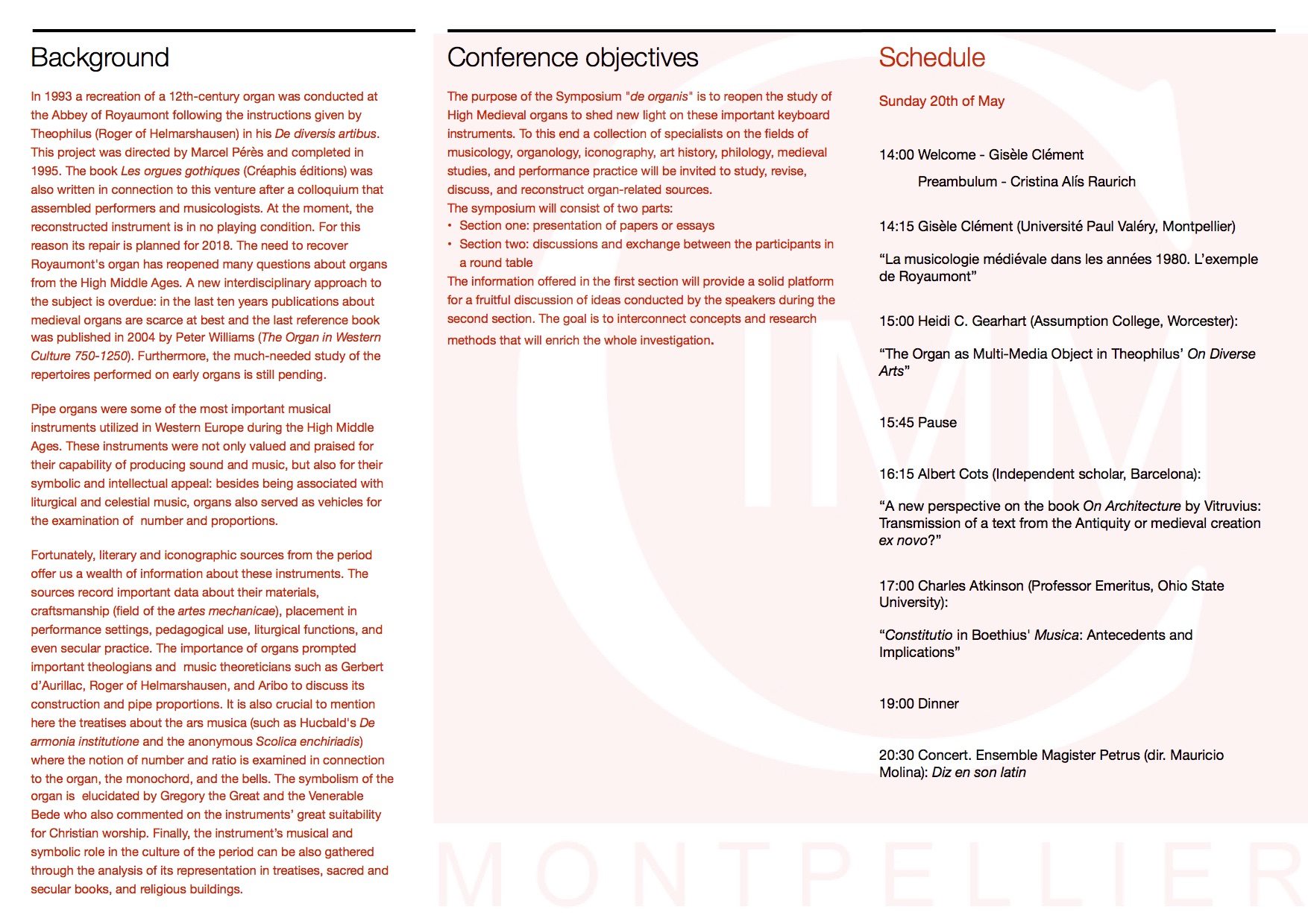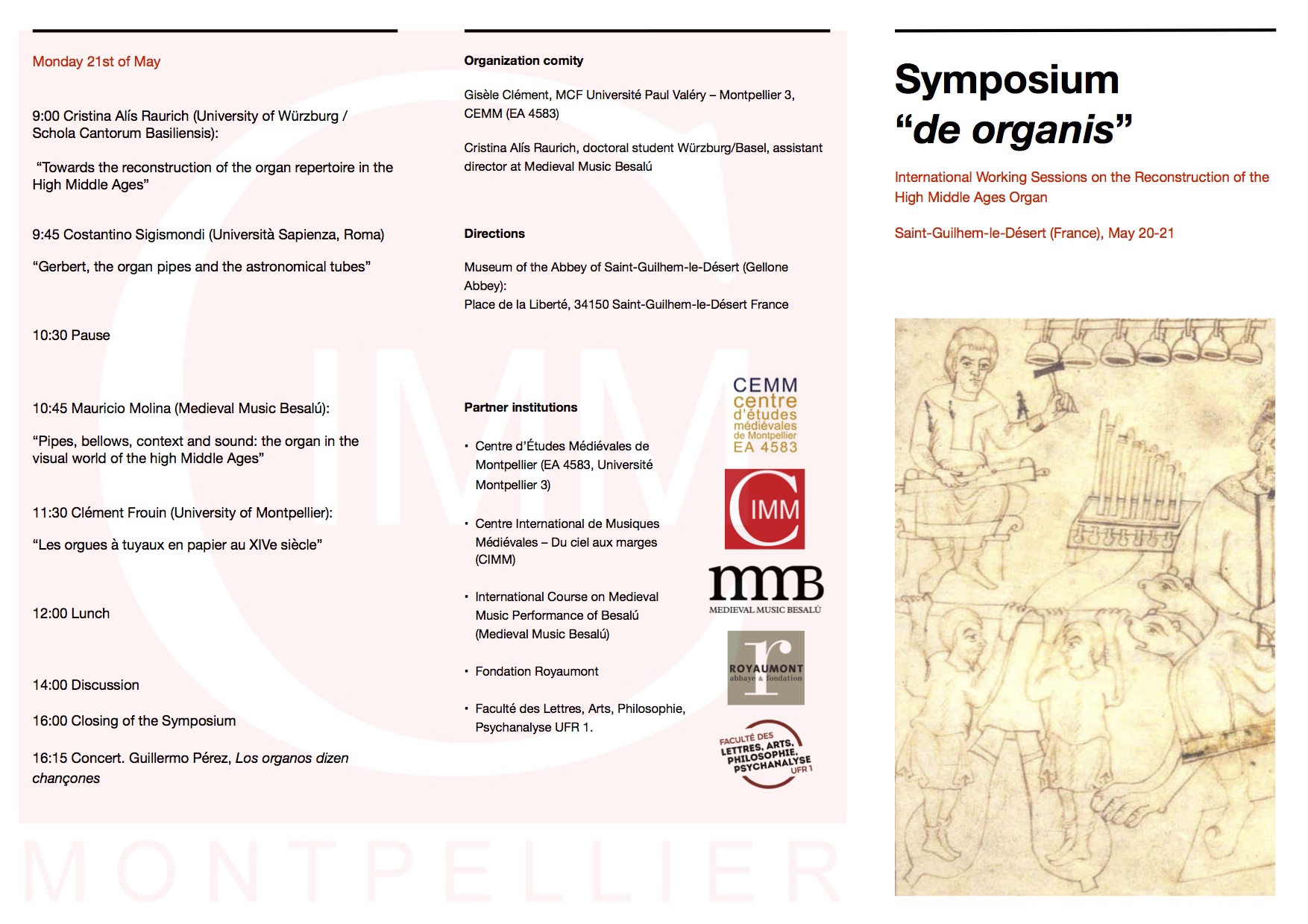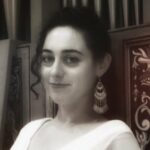Symposium “de organis”. International Working Sessions on the Reconstruction of the High Middle Ages Organ
The Symposium “de organis” took place in 2018, May 20-21 in Saint-Guilhem-le-Désert (South France). Here follows a short report on the event:
As far as I know, up to now, most of the conferences or similar events about medieval organs have principally focused on late medieval and renaissance organs. Probably this preference is a consequence of the focus of attention on the oldest original medieval instruments — or partly original — that have survived to this day. One more reason for the prevalence of late medieval is that performers are generally more keen to perform late medieval and renaissance music rather than middle medieval music, and consequently instrument makers follow the demand. Nevertheless, in some rare cases makers have attempted to reconstruct earlier organ models. In the first paper of the Symposium, Gisèle Clément — in a geste d’ hommage to Marcel Pérès — explored the history of one of this reconstructions: the organ of the Fondation Royaumont.

The second element that past events on medieval organs had in common is the focus on the instrument as a material object and the high participation of performers and instrument makers in contrast to a lower participation of scholars. In the meantime, scholars have conducted and published outstanding research which has become for us a reference and starting point for subsequent research. Of them I should mention two names: first, Klaus-Jürgen Sachs, author of the analysis and translation of texts on the measurements of organ pipes — or Mensura fistularum, and secondly, Peter Williams, who has compiled in a rich book documentation and thoughts related to the High Middle Ages organ.
The organ: a symbol of Christianity, a symbol of technology and craftsmanship, a tool to give speculative examples on numerical proportions, a didactic tool to learn to sing, and one instrument that was constructed, played and heard on specific occasions. Because of the large spectrum of the organ universe, the program of this Symposium was designed with the intention better to understand its context. When studying the sources, the evidences, and traces of the organ we are faced with a set of questions that are shared among disciplines: these questions involve both the transmission of knowledge over time and methodologies to approach the interpretation of such knowledge. Transmission and interpretation was a leitmotiv in this Symposium.
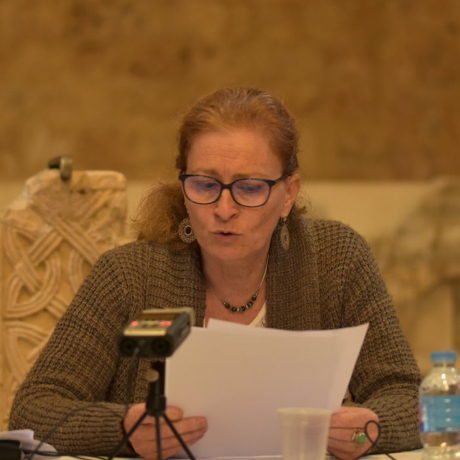
In the second paper of the first day, Heidi Gearhart explored Theophilus’ work De diversis artibus, one of the period organ-related treatises that include a large amount of craftsmanship on organ making. But not only; in her paper intellectuality, functionality, and spirituality have also a place in order to present a multi-media object.
The close relationship between Theophilus’ work and De architectura by Vitruvius lead us to the following paper by Albert Cots. The organs described by Theophilus and Vitruvius are surprisingly similar despite the more than ten centuries of cultural distance. Albert presented several considerations about the analysis of Latin language in De architectura’s earliest surviving manuscripts and he presented a methodology and its implications in the analysis of extant written texts.
The paper that closed the first Symposium’s session was also dedicated to the transmission of the ancient into the medieval universe. Charles Atkinson presented the connections between ancient music theory related to the tone-system and Boethius’ writings. One of the reasons why this topic takes place in a Symposium about High Middle Ages organs, is because the organ is an instrument that is sometimes used as an object for the exemplification of music theory.
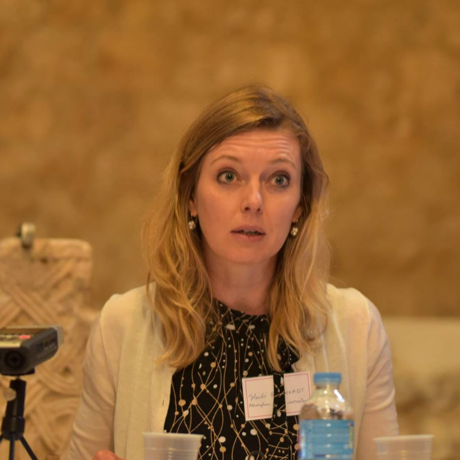
On the second day, we shifted from theory to practice in order to tackle the question: what was played on the High Middle Ages organ? This is probably more an enigma than a question given the few traces that we have received. The paper was presented by Cristina Alís Raurich.
In the second paper of the day, Costantino Sigismondi focused on the figure of Gerbert d’Aurillac and contrasted his descriptions of organ pipes against the pipes for astronomical purposes. This paper allowed us better to understand the relationship between music and astronomy, two of the subjects of the Quadrivium, that Gerbert mastered.
The third paper was an iconographical survey by Mauricio Molina on the Carolingian and Romanesque periods, with the focus on the representation of organs in the Psalms. He included common aspects of culture, technology, cultural identity and ritual in relation to organs.
The last paper was an extra, because it was a “modern” topic. Clément Frouin talked about his master’s research on the making of paper organ pipes in the 14th century.
For the first time those interested in High Middle Ages organs will find in this Symposium a 3 in 1 outline: first, a relocation of the chronological focus on the 9th to 12th centuries; second, a 100% scholarly event; and third, the reconstruction of a broader picture that gives perspective to the topic and triggers the discussion to interconnect research from the various angles of the organ’s world.
If you will allow me a moment of emotional weakness, let me confess that for me this is a dream-team of scholars in a dream-come-true exchange of ideas and research.
